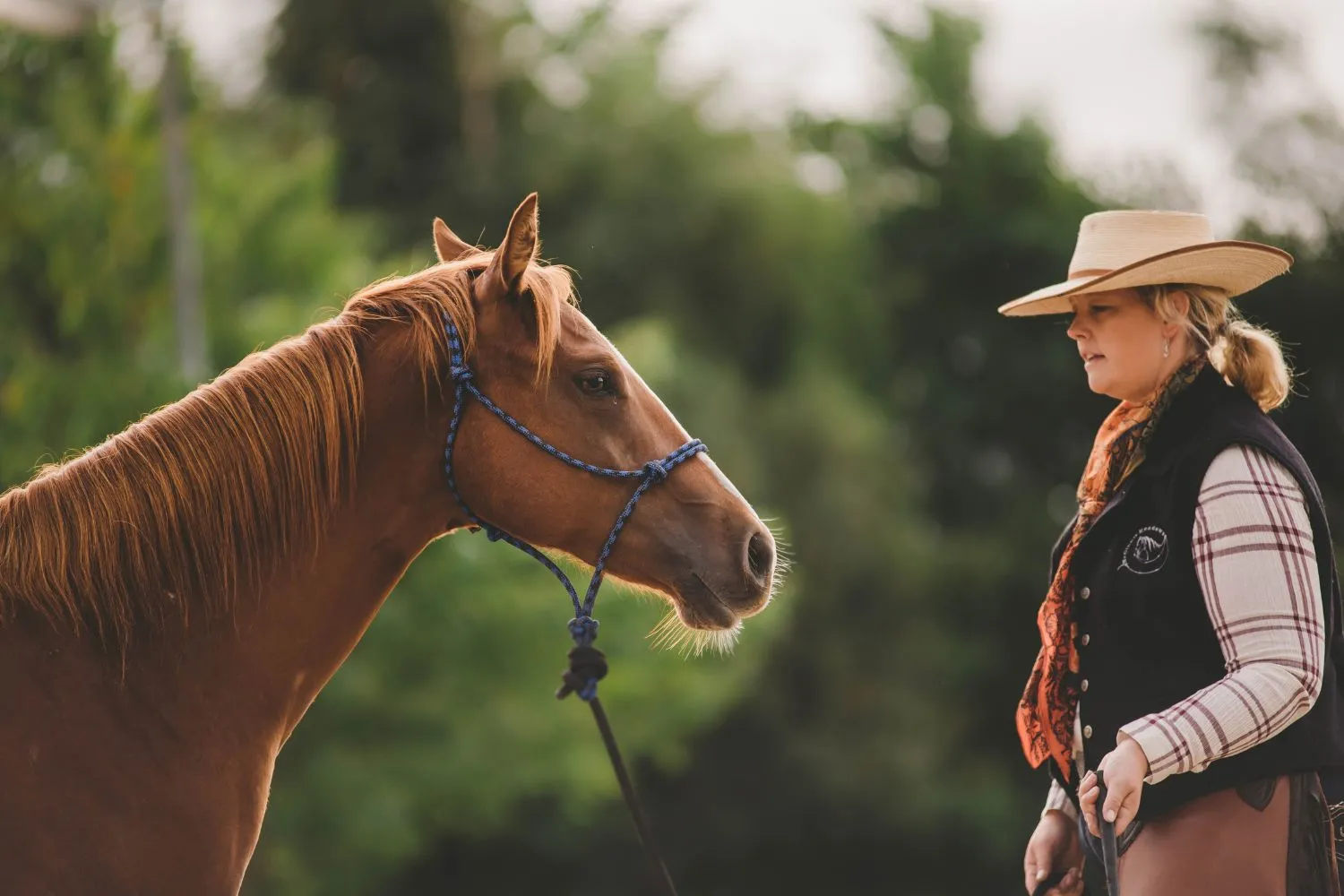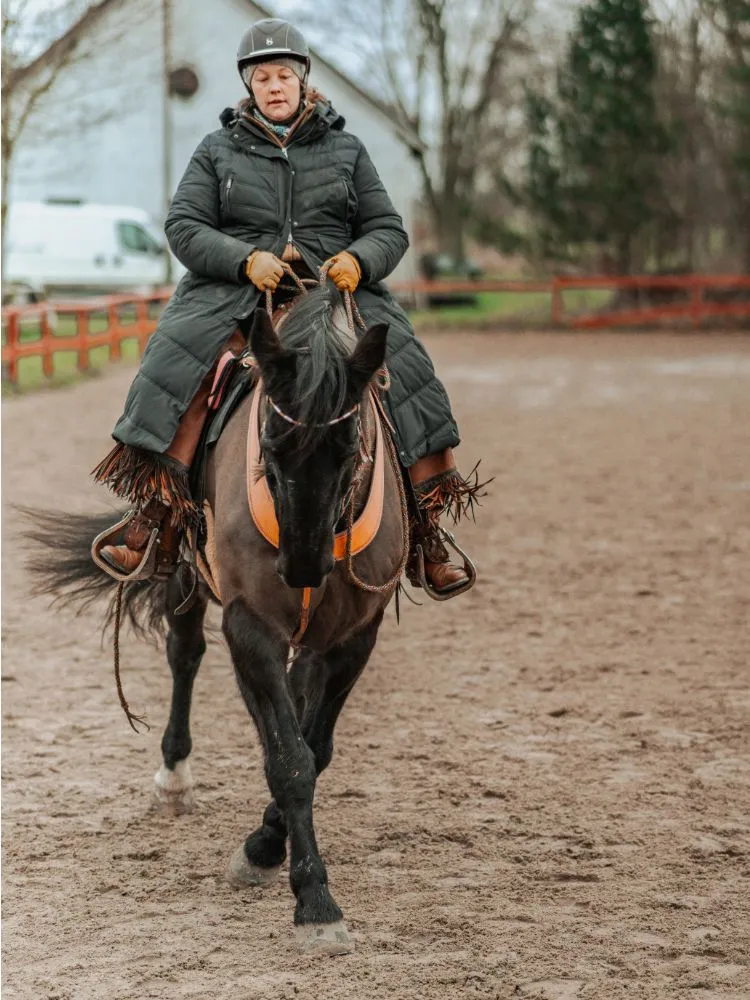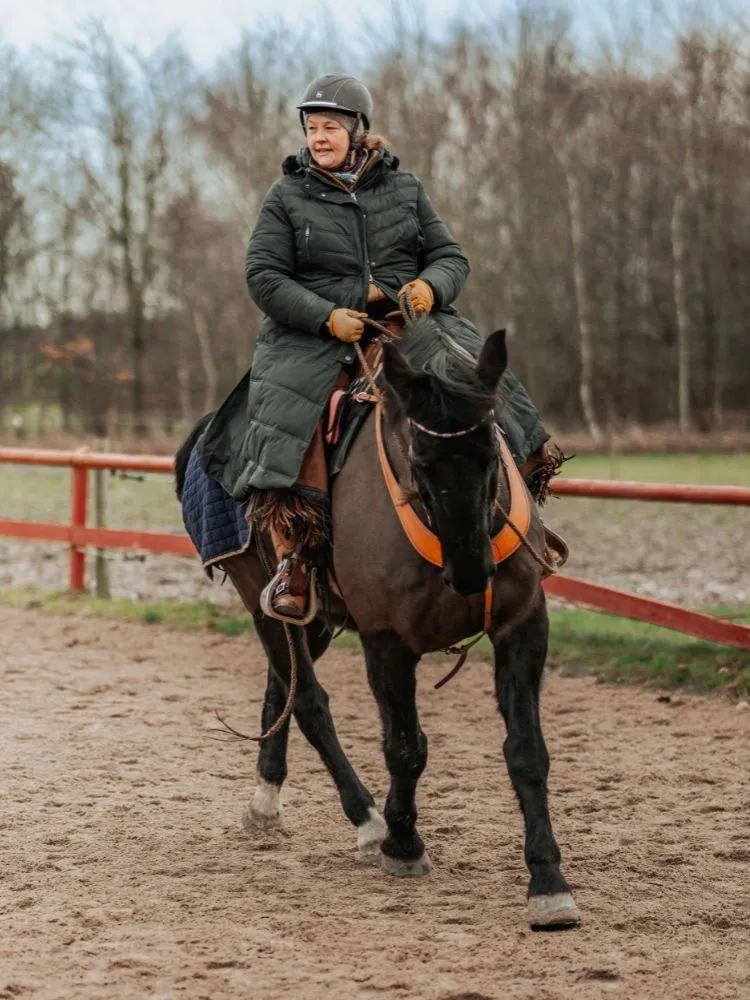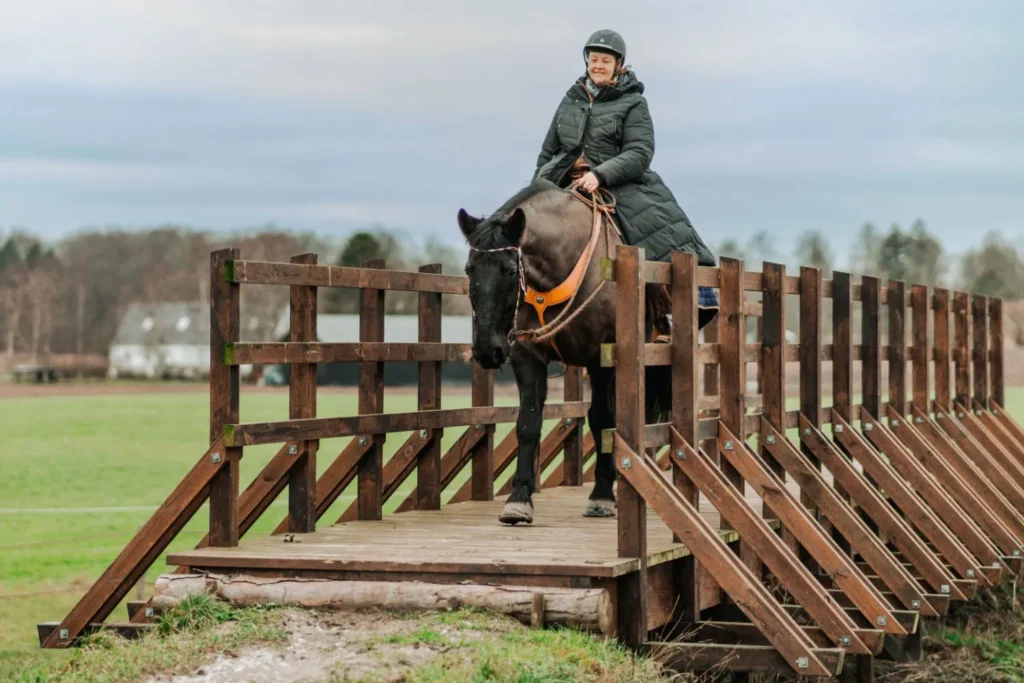Menu

During the training of our horses, many challenges can arise, but fortunately, you're not alone. Coach Charlotte Lemming often encounters three common issues in horses, and you may recognise some of them yourself. Learn how to tackle these challenges and improve your training in the future.
Charlotte Lemming teaches and works with horses and riders through her business, Working Horsemanship. Charlotte's focus is on the strong partnership between horse and rider – regardless of discipline or level. Charlotte helps riders and horses to experience more security, both physically and emotionally. This can be achieved through compassionate, strong leadership and well-grounded work, based on understanding, empathy, clarity, consistency – for both horse and rider.
To better understand the challenges that many horses face, Malgré Tout visited Charlotte Lemming. The challenges that Charlotte addresses here can be present in all types of horses and riders, and not just in a particular discipline or level.
Also Check Out:
IT SHOULD BE FUN TO OWN A HORSE AND ENRICHING FOR BOTH HORSES AND PEOPLE.

Charlotte explains that one of the first classic challenges is that horses are often given tasks that do not match their level of training. Or it could typically be that the horse is asked to perform an exercise that it does not understand. This could be due to the rider not having sufficient knowledge on how to ask the horse to perform the given task.
"When the horse doesn't understand the task, I focus on breaking the task into smaller chunks. For example, if the horse is to learn a versade, I don't start by asking it for a versade."
"Here we instead use exercises such as short slalom courses, where we can teach the horse to understand that when we apply the inner leg it means that the horse should step under itself. Later we straighten the horse and start with counter-versades, making it easier again for the horse to understand. Once the horse has understood the counter-versade, one can build on this and ask for a versade. At this point, the horse will be better prepared to perform the task because it understands what the signals mean."
It is important to practice the exercises in very short sequences, so that one enters and exits the exercise and does not drill the exercise for a long stretch. If done in short sequences, it becomes a game for the horse. When the horse does it right, even if it's just a single step, the pressure is released. In this way, the horse will begin to understand what we want from it.

The second challenge that Charlotte often sees in horses is that the horse neglects itself to do what the rider asks of it – even if it may have physical challenges.
"Horses are a fantastic animal, and they do almost everything for us humans. Horses always give us their best attempt to solve the task that we humans ask them to do. But there are many horses who struggle to do what the rider asks of them because the horse is physically challenged."
"In reality, horses are actually too good to us. I therefore often see that it can be difficult for riders to see and understand that their horses may be in pain. If the horse does not do what the rider says initially, due to physical challenges, frustrations grow for both horse and rider, and we are moving away from the partnership. No one wants to be unfair to their horse, sometimes one may need other eyes, and that's often where a coach comes into the picture."
Charlotte explains that when she encounters inexplicable problems, where a horse has abnormal behaviour, she has become quicker to advise riders to have their horses examined by a vet or seek other forms of professional help. One should be good at asking oneself the question: "What is the reason for my horse reacting the way it does?". By doing this, one listens to their horse when it tries to signal that something might be wrong.
One of the things Charlotte focuses on the most is getting the rider to observe their horse. This allows the rider to monitor whether the horse is developing in a positive direction, or if there are things that the horse continues to struggle with. Through this, the rider gains an understanding of when the horse's behaviour is due to physical challenges, and thus avoids being unfair to their horse.
TRAINING A GOOD HORSE IS LIKE BUILDING WITH LEGO. WHEN THE FOUNDATION IS PROPERLY LAID, YOU CAN BUILD AS HIGH AS YOU LIKE – AND YOU CAN BUILD WHATEVER YOU WANT.
As the third and final typical challenge, Charlotte explains that she often sees a tendency for riders to mollycoddle their horses. If there's something the horse is afraid of, the rider moves it or goes far around it. To address this, Charlotte explains the following:
"For this reason, I focus a lot on the rider presenting their horses with varied training. Horses should be challenged with different tasks. The result of this is that horses will learn to be curious and investigative, rather than being insecure and uncertain, when faced with something new. As the horse's training progresses, one should expose their horse to more and more new challenges, as much as it can handle, so the horse experiences success and gains confidence. This also results in the horse trusting the rider more."
This means that when you, for example, go to a competition field where it's windy, and there are loudspeakers with music, you still have a calm horse. The horse has confidence and trust in its rider because it has previously completed challenging tasks where it experienced success. This reduces the risk of the horse reacting inappropriately, because the horse trusts the rider.

Ensure your horse experiences new, exciting things, thereby building a curious and brave horse. When the horse realises the rider is there to help, it becomes comfortable with most tasks. If one keeps removing things that the horse thinks are scary, you deprive the horse of the chance to investigate the new and realise that it's not so dangerous. In this case, the horse instinctively reacts to new things by becoming insecure and going into flight mode because it is a flight animal by nature.
In conclusion, we want to highlight one of Charlotte's most important messages:
"NO MATTER WHAT YOU DO WITH YOUR HORSE, IT'S ABOUT YOUR PARTNERSHIP, AND WHETHER IT CAN SUPPORT WHAT YOU WANT TO DO TOGETHER. HERE, IT'S IMPORTANT TO ASK YOURSELF IF YOU'RE DEVELOPING OR DIMINISHING THE PARTNERSHIP BETWEEN YOU AND YOUR HORSE."